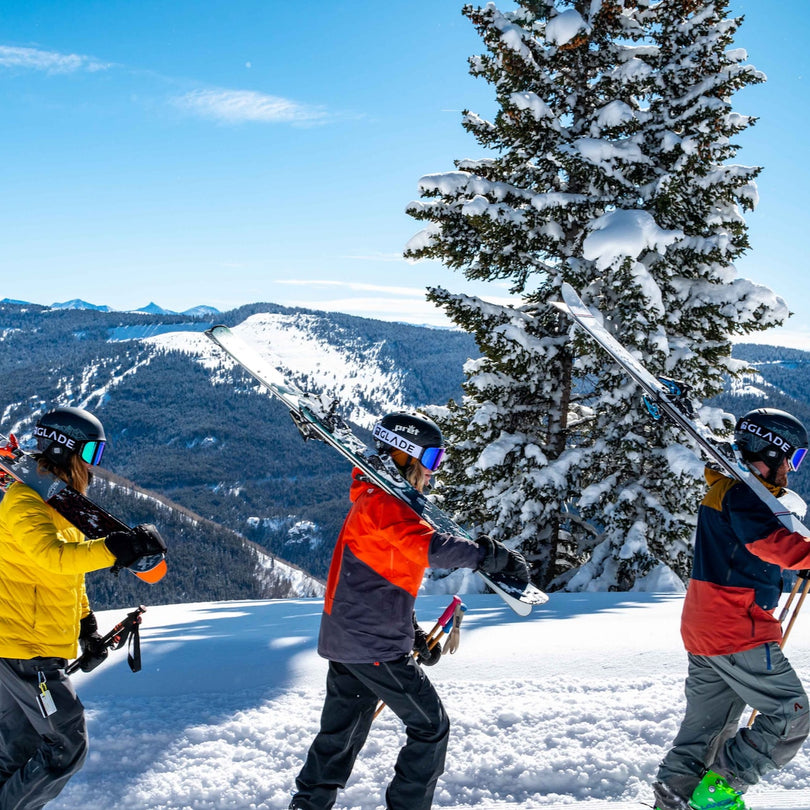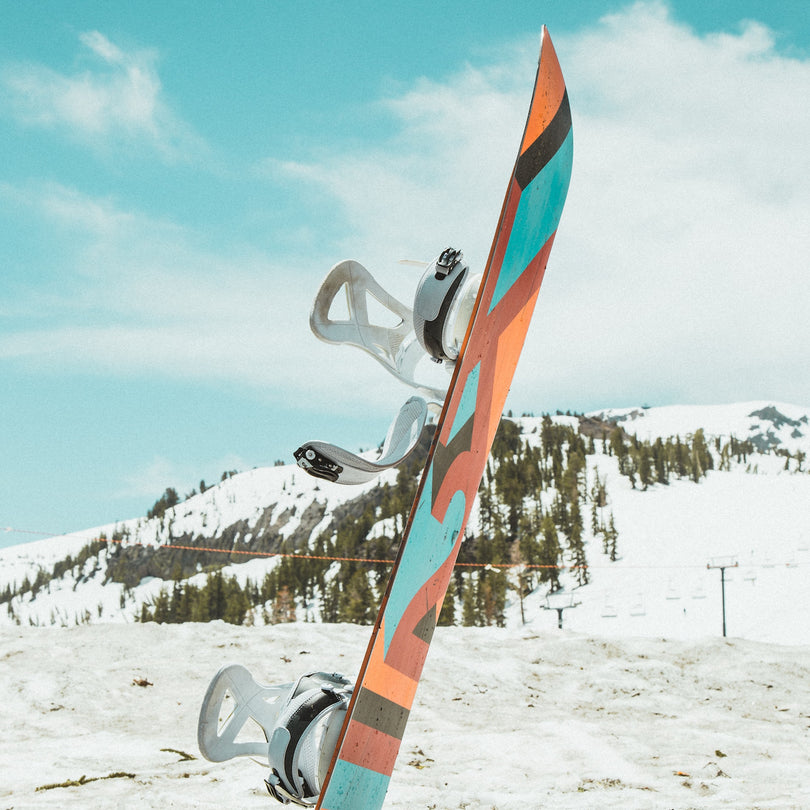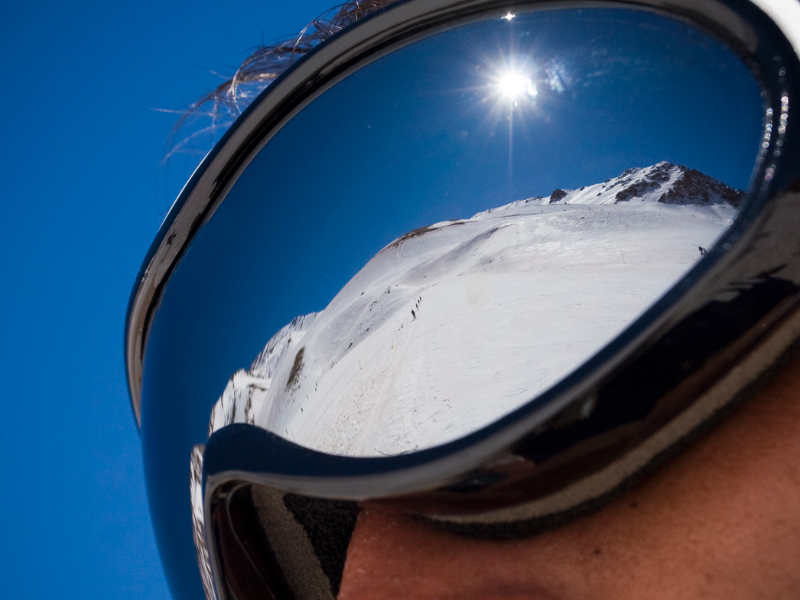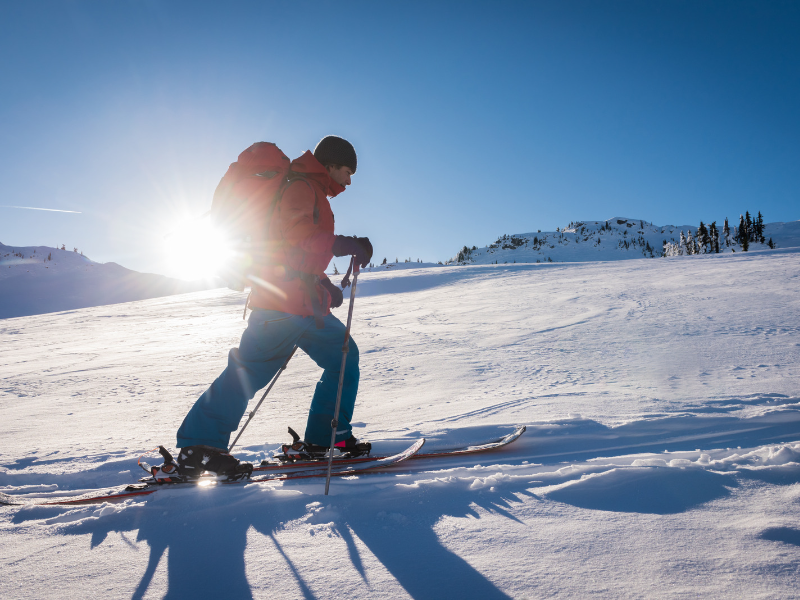What is VLT and Why Does It Matter for Snow Goggles?
As you’re browsing the internet doing research and trying to decide on a pair of snow goggles, you’re bound to run across some new terminology. One of the more obscure acronyms you’ll see mentioned over and over is VLT. So what is VLT in snow goggles?
VLT is short for “visible light transmission,” or the amount of light that can travel through the lens to your eye. VLT is measured in percentage units - a higher percentage means more light can pass through the lens, and a lower percentage means less light can do so.
Beyond just the percentages, however, are several other factors related to VLT. Tint color, for example, can influence both the aesthetic of your goggles as well as the light that makes it through. Read along as we break down the essential VLT vocabulary you should know before making your purchase.
A Closer Look at VLT
To reiterate, VLT stands for “visible light transmission.” Think about putting on sunglasses, for example. When you move the lens over your eye, there is a clear difference in how bright the outside world appears to you. Depending on the pair of sunglasses you wear, this may be a slight change or a drastic one.
The same applies to snow goggles.
If you’ve ever been up on the slopes, then you know how bright the reflection of sunlight can be coming off of the snow itself. This light can be blinding, and dangerous for someone who is, say, moving at high speeds down a mountain. This is why choosing the proper VLT level for your goggles is so important.
What Are The Different VLT Levels?
VLT is categorized based on a light percentage unit rating. Remember that a higher VLT means that more light can travel through the lens, and a lower VLT means that the lenses are more opaque and allow only a small amount of light to penetrate.
A general breakdown of VLT levels is as follows:
- VLT 80 - 100%: These lenses allow the most amount of light to penetrate, with some being clear and allowing total penetration. These lenses should only be considered for use at nighttime when there is no sunlight.
- VLT 43 - 80%: Lenses in this category still allow a good amount of light through. These work well for relatively dark or overcast days, as well as riding right before sunup or after sundown. They are also appropriate for storms and blizzards when there is minimal sunlight, or if riding indoors in artificial light.
- VLT 18 - 43%: These lenses are also known as “all conditions” lenses and are the most popular category sold and worn. They work best in most conditions, including the sun, partial clouds, and under trees where there are many shadows. If you are new to snow sports and looking for your first pair of goggles, I would highly recommend this category!
- VLT 8 - 18%: If you are going to be riding in the middle of a sunny day in the spring or fall, consider grabbing lenses in this percentage range. They are designed to work well in these bright conditions.
- VLT 3 - 8%: The highest level of light protection is in this category. These special goggles are for unique occasions, such as high-altitude riding, glacier runs, and midday summer rides. These are the go-to lenses for the brightest conditions, but block so much light that they can be dangerous on cloudy days, and are not recommended for universal use.
How Does Tint Color Relate To VLT?
The tint color of your lenses is directly related to the VLT level. Lighter tints allow more light through, and thus have a higher VLT percentage, than darker tints. VLT 100% lenses are clear and thus cannot have any sort of tint to them.
For cloudy days or when riding in the early morning and late evening, a light tint of yellow, or green works perfectly well. These light color tints allow a decent amount of light to still penetrate the lens.
For your universal or “all conditions” lenses, recommended tint colors include rose and amber, both of which block enough light for a majority of seasons and times of day when you might be on the slopes. These lens colors are a safe bet when you’re just starting and participating casually in snow sports as a hobby.
For much brighter days, higher altitudes, and midday rides, tint colors like brown, gray, black, and copper work best. These lenses cut more of that visual light out and still allow you to see where you’re going.
Another option that many people opt for is mirrored lenses. Mirrored lenses have a reflective coating on the outside that reflects much of the visible light that makes contact, cutting out between 10 and 50% more visual light than non-mirrored lenses.
What You Should Know About Polarized Ski Lenses
In your research, you may have come across this term for a special type of snow goggle lens. However, before you can understand what polarized lenses are, you have to know a bit about the science of visual light:
Usually, when light is reflecting off of the world around you, it reflects and scatters in many different directions, allowing you to see the world around you in three dimensions.
However, when light reflects off of a smooth, flat surface such as a car windshield, a still lake, or a smooth bed of snow, it reflects altogether at one sharp angle. This is what is known as glare.
Polarized lenses solve the glare problem since they are treated with a unique chemical that is designed to filter light. The chemical that is applied to the lenses organizes itself vertically along the surface of the lens.
Think of the molecules like tiny blinds hanging in front of a window. The only light that lines up with the openings of the blinds can be seen. This blocks the horizontal light, such as light that is reflected off the smooth surface of white snow, and prevents glare.
Because of this filtering, objects that are seen through a polarized lens are darker than those seen through a non-polarized lens, but these objects are also sharper in focus and clearer, and it is easier to make out fine details even from a distance.
Polarized lenses are highly recommended for snow goggles. They are more expensive than non-polarized goggles, sometimes twice as expensive or more, but absolutely worth the price.
The Verdict on VLT
Ultimately, when deciding what level of VLT to have on your snow goggles, it is important to take into consideration the location of the slopes, the times of year you like to ride, your skill level, and the typical weather conditions of the area you’ll be riding in. If you are new to snow sports, a safe bet is to start with a pair of universal VLT goggles. Universal VLT levels typically fall between 18 and 43% and come in tint colors such as rose or amber. The Kenver team highly recommends investing in polarized lenses for your goggles.
The price difference is worth the investment, as the polarized coating will make your entire experience better and can keep you safer than goggles that do not remove that glare.







